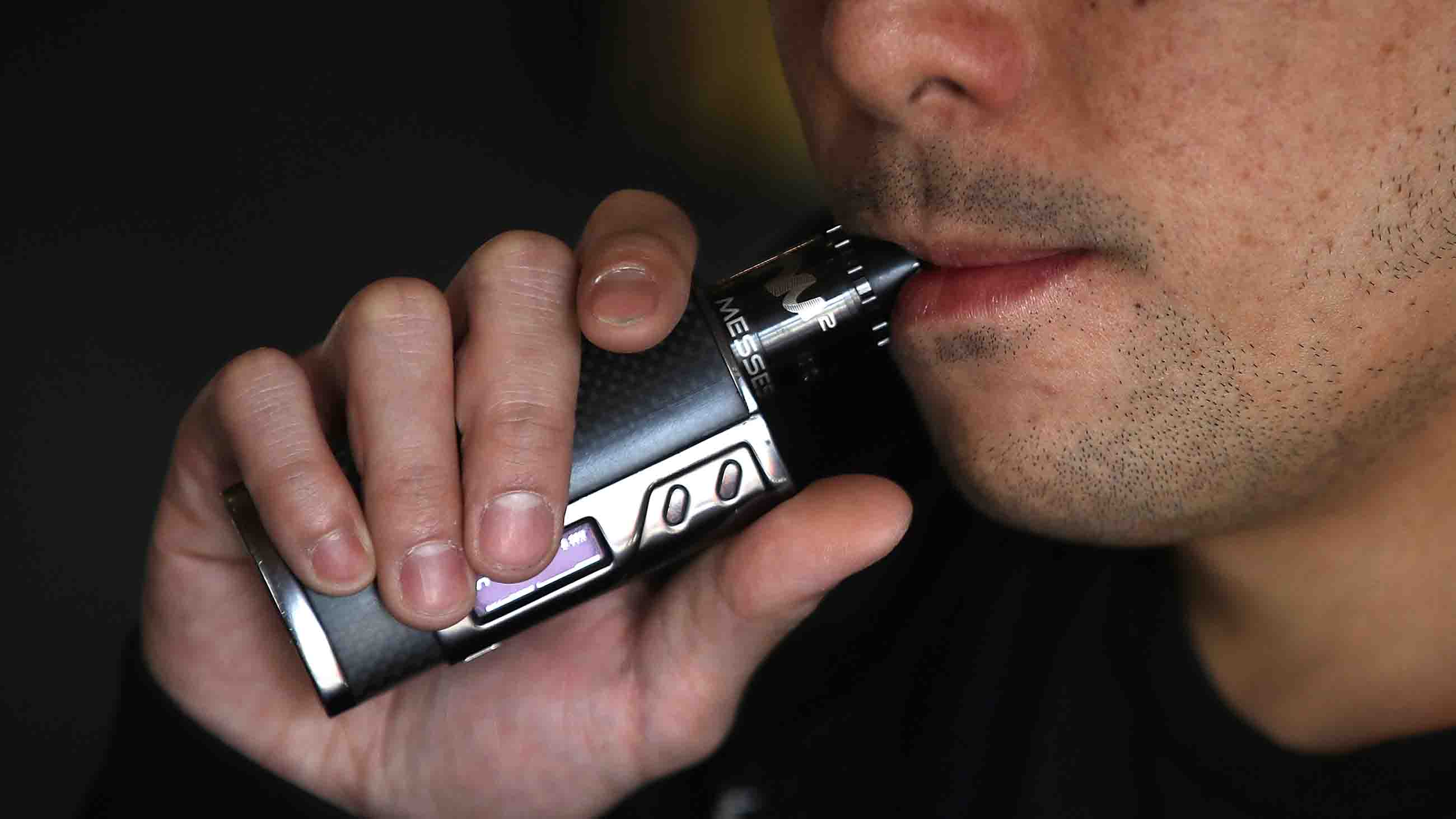Are Electronic Cigarettes a Gateway to Tobacco?
Electronic cigarettes are one of the newer product lines for Japan Tobacco International, the company in which the former director of the Centers for Disease Control and Prevention, Brenda Fitzgerald, famously purchased stock. The ill-advised investment, made a month after her appointment in July, cut short Fitzgerald’s tenure with the Trump administration, which ended with her resignation last week.

Electronic cigarettes are generally considered safer than traditional tobacco smoking, but do they lead young people to eventually smoke cigarettes anyway?
Visual: Justin Sullivan/Getty
Tobacco is the leading cause of preventable disease and death, resulting in more than 480,000 premature deaths annually in the United States. Electronic cigarettes are viewed by many experts as promising alternatives, because they deliver aerosolized nicotine that is usually derived from tobacco but ultimately free of it. Nicotine is addictive, of course, but it is much less harmful to human health than tobacco smoking.
But even if e-cigarettes were Japan Tobacco’s only tobacco-related product, Fitzgerald likely would have faced ethical questions. The science on the full health impact of e-cigarettes is unsettled, and discussions are fractious among researchers and policymakers on how to regulate cigarette alternatives.
One question is whether e-cigarettes and other alternative tobacco and nicotine products such as tobacco water pipes, or hookahs, can serve as a “gateway” to cigarette smoking, especially in youths. Policymakers focus on young people because about 90 percent of adult smokers start before they are 18 years old, according to a 2014 Surgeon General’s report.
A recent study links the onset of cigarette smoking in teens to their earlier use of e-cigarettes. Teens who reported that they had never smoked, but had used e-cigarettes even just once, were twice as likely one year later to have smoked a cigarette in the past month than those who never tried an e-cigarette. The same connection was present if the youths had smoked cigars, chewed tobacco, or used a hookah a year earlier.
The correlation held up independent of sex, age, socioeconomic status, and a “sensation-seeking” measure that added up attitudes and behaviors such as a teen’s affinity for exciting experiences and unpredictable friends.
The study is the first to look at the relationship between cigarette smoking and exposure to all these cigarette alternatives, says lead investigator Benjamin Chaffee, an epidemiologist at the University of California, San Francisco. The researchers made their observations between 2013 and 2015 on a sample of more than 10,000 youths ages 12 to 17. The results were published January 2 in JAMA Pediatrics.
The finding undercuts the idea that e-cigarettes pose little threat to the health of young people who get their hands on them nowadays. (A ban on the sale of e-cigarettes to minors went into effect in the U.S. in 2016.) “An adolescent who is using any type of tobacco or nicotine product is at elevated risk of going on to cigarette smoking,” says Chaffee. “So, it stands that policies to restrict youth use of any type of nicotine or tobacco can prevent smoking in this population.”
Other researchers disagree, saying that the gateway effect of e-cigarettes is exaggerated. “This is a valid concern, but it has been overblown and over-interpreted,” says David Abrams, a social scientist at New York University and co-author of a review essay that advocates for a more tolerant view e-cigarettes and other nicotine delivery products such as gum and patches. An advance version of the essay in the Annual Review of Public Health was published last month.
Concerns that e-cigarettes are a gateway to cigarettes fail to account for the public health benefits of adults who could stop smoking conventional cigarettes by switching to e-cigarettes, he says. He notes an estimate published last year that switching cigarette smokers to e-cigarettes could prevent as many as 6.6 million Americans’ premature deaths during a 10-year period compared with a status quo scenario.
Outcomes for youths could vary regionally too. E-cigarettes are attracting “very few young people who have never smoked into regular use” in the U.K., according to a report on e-cigarette use released Tuesday by Public Health England, the agency in charge of protecting and improving that nation’s health.
Chaffee remains cautious, noting the lack of long-term research on the effects of e-cigarettes, which emit a different brew of fine and toxic particles into users’ lungs than cigarettes do, including formaldehyde. And most adult users of electronic cigarettes are also smoking cigarettes, he says.
Ultimately, Chaffee points the finger at big tobacco companies, including Japan Tobacco, all of which are active players in the cigarette alternatives markets. Last month, Philip Morris failed to win approval from an U.S. Food and Drug Administration advisory panel to market a heat-not-burn tobacco device in the U.S. as a “modified risk” product that is safer than conventional cigarettes.
“What you don’t see Philip Morris doing,” Chaffee says, “is proposing to stop selling cigarettes or to make the cigarettes that they sell less harmful and less addictive.”










